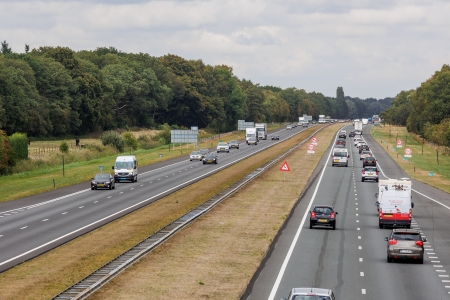Shielding structures such as guard rails and 'cable barriers' aim to prevent serious head-on crashes and/or crashes with obstacles on the roadside. However, for motorcyclists, a shielding structure, regardless of type, can also be seen as an obstacle ([11]; see SWOV fact sheet Motorcyclists). Collisions with guard rails and other shielding structures account for 2-4% of fatal motorcycle crashes in Europe [25].
As cable barriers are more flexible than other types of barriers, the risk of serious injury for motor vehicles due to a crash with a cable barrier is lower than that due to a crash with, for example, a guard rail. Cable barriers therefore generally appear to be more effective in preventing serious crashes [26] [27] (see the question What does a safe verge (or outer verge) look like?). Although motorcyclists consider the cable barrier to be the most dangerous shielding structure [28], no evidence to this effect was found in several crash studies [27] [29] [30]. For motorcyclists, these studies found no difference between the risk of a serious crash with guard rails or with cable barriers.
